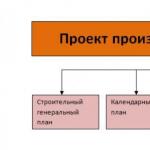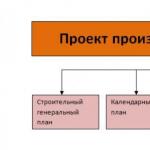Construction or renovation work are often produced using various sand- cement mortars prepared independently. The quality of any mixture depends on the condition of its components. While all parameters are known for cement, the situation with sand is more complicated. The density of dry sand is an important parameter that largely determines the quality and consistency of the solution. The ability to calculate this value is just as necessary for the builder as the ability to calculate the amount of materials.
Why is it necessary to determine the density of dry sand?
Types of sand
Sand is a dry bulk material consisting of finely crushed rocks. The fraction size ranges from 0.05 to 5 mm, which creates problems in calculations. The composition of building mixtures requires fairly careful adherence to proportions, otherwise the strength of the materials will not meet the requirements of SNiP.
Determining the density of sand in practice is a very difficult task. The gaps between individual grains of sand are practically impossible to measure, since the shape of the grains of sand obtained by different conditions crushing rocks, has a complex and irregular configuration. There may be gaps between the corners and edges of individual particles that are significantly larger than the gaps between natural grains of sand, whose shape is closer to spherical.
Dry sand natural origin(river) has a more dense structure, so using the same volume of material of different origin or fraction size will produce mixtures that differ from each other in their parameters. Therefore, it is very important to have the most correct knowledge of all parameters of the components of the mixture, the mass of the material, its density and other indicators.

Main types and parameters of sand
The difficulty in definition forced the introduction of the concept of bulk density of sand, which determines the amount of mass per unit volume. There are three types of density:

- True. This is an indicator of extremely compressed sand, which has no voids between the grains.
- Bulk. Value in weighed and dry form.
- Average. This is a value that takes into account the presence of moisture and the porous structure of the grain. The average density is higher than the bulk density, but less than the true density.
Humidity is one of the the most important factors, constantly changing condition and bulk weight. Sand is stored, as a rule, in the open air, as a result of which the degree of humidity begins to depend on weather conditions. Compositions of all mortars assume the presence of dry material, and the sand in the mixture has other, non-ideal parameters. The change in density forces the use of compaction factors that correct the value that dry sand has.
The most common options for correction factors are shown in the table:
The average sand density is multiplied by the compaction coefficient, and the result is a value close to the real one. However, it is necessary to take into account the presence of an error (about 5%) arising from the impossibility of establishing with absolute accuracy the value of the correction for each specific case. A more accurate result is obtained by the weighing method, but under conditions construction site it is not available, so estimates are most often used.

Calculation of sand density
Independent calculation of indicators can be done using the weighing method. To do this, you will need a scale or a steelyard with a capacity of 20–25 kg, and a dry container (an ordinary bucket can be used). The procedure is as follows:

- The empty container is weighed and the result is recorded separately.
- The container is completely filled with sand. The best option- pour it in a heap, then carefully remove the excess with an even strip and leave it flush with the edges.
- The full container is weighed.
- The tare weight is subtracted from the resulting value.
- The resulting value is divided by the volume of the container, the result is converted into standard units - kg/m3.
More accurate indicators can be obtained by weighing several times, collecting material from different areas. It must be remembered that construction sand is stored in conditions that do not allow maintaining the same degree of humidity, so you should use it as quickly as possible, or periodically take repeated measurements and adjust the calculations.
Bulk density values for different types of sand
Sand mined in different places, has a different structure, composition and fraction size. In order to correctly calculate the number of components in different mixtures or concrete, it is necessary to take into account the bulk density of sand of one type or another.
| View | Extraction method | Dry density (bulk) | |
| g/cm 3 | kg/m 3 | ||
| River | Mined from the bottom of the river | 1,5–1,52 | 1500–1520 |
| River with grain size 1.6–1.8 | 1,5 | 1500 | |
| River compacted | Washed, without clay fractions | 1,59 | 1590 |
| River alluvium | Extracted from the river bottom using the alluvial method | 1,65 | 1650 |
| Career | From quarries, alluvial | 1,50 | 1500 |
| Quarry, fine grain | Seeded, dry | 1,7–1,8 | 1700–1800 |
| Building | Complies with GOST 8736-93. Mined during mining | 1,68 | 1680 |
| Loose | 1,44 | 1440 | |
| Quartz | Obtained by crushing white quartz | 1,4–1,9 | 1400–1900 |
| Nautical | Drawn from the bottom of the sea | 1,62 | 1,62 |
| Ovrazhny | Mined open method, may contain many impurities | 1,4 | 1400 |
| gravelly | Mixed with gravel | 1,7–1,9 | 1700–1900 |
| Perlite | Obtained from expanded rocks | 0,075–0,4 | 75–400 |
| Slag | Obtained as a result of crushing sieving metallurgical waste | 0,7–1,2 | 700–1200 |
The indicated values are valid for dry raw materials, so when calculating, you will need to take into account the actual condition and use compaction factors. If they are neglected, excessive consumption will occur, and the composition of the mortar or concrete will be changed, which can reduce the strength of the pouring or connection of building structures.
Humanity has been using sand for construction needs for a long time; without it, one certainly cannot build a house. It is actively used in dry construction mixtures, which are sold in stores or as a component for the preparation of cement mortars. Construction sand is used depending on its density, e.g. individual species are used to create others in order to make a concrete screed.
Sand is a non-metallic, free-flowing building material. As a rule, this is a mixture of grains measuring 0.14-5 mm, which were formed during the natural destruction of rocks. There are several. They are characterized by a different content of small particles of clay or simply dusty elements.
The purest of them and the highest quality is river sand. Sea water is worse, since it already contains salts, from which it must be purified. Quarry sand and mountain sand are distinguished by the presence of undesirable clay, which means the quality of the product is lower. Sand mainly has the following composition: quartz and also impurities in the form of silicates and the same clay.
To characterize this building material, there is such a thing as sand density. It is estimated by the porosity coefficient. For example, fine-grained varieties have an indicator of 0.75. The density of construction sand and its quality are always determined by the presence of clay in it. Builders love to work with a uniquely pure river product. It has a density of 1.3 tons per cubic meter. The density of sand with clay content is higher and is already 1.8 tons. In the same volume.
This material has served as the basis for cement and concrete compositions. It is in great demand when laying highways, blowing glass products and in agriculture.
In construction, the concept of density is of fundamental importance, which is the ratio of the mass of sand to its volume; it has units of measurement: g/cm3 and kg/m3. Natural sand is 1300-1500 kg/m3.
For bulk building materials this indicator is variable and depends on the degree of compaction. This means that the same amount of product occupies different volumes. The density of sand is invariably dependent on humidity, and any changes in it affect the bulk density. As humidity increases, sand grains become covered with a layer of water and, accordingly, the volume of sand increases sharply. It is sand that is taken into account during humidity fluctuations when calculating the dosage of sand according to the required volume. If this factor is not taken into account, the construction mixture will not have the necessary margin of safety and, in general, the engineering structure will be of poor quality.
Nowadays it is mainly used to extract it simply - by washing quarry sand. This is done in this way: clay and dust are washed out of it with a large volume of water.
The density of construction sand also depends on the structure of the grains. For example, a high indicator directly indicates that it contains dense, especially strong and frost-resistant grains. It is this material with an increased coefficient that is indispensable for construction in permafrost conditions. It is the basis of high-strength concrete with excellent frost resistance.
Density in a loose state is characterized by 1500 kg/m3, but can increase to 1700 kg/m3. It is characterized by the best hygienic characteristics and is washed and calcined dry natural material. When used in construction, high hygienic characteristics dwellings. The density of quartz sand is a very important parameter that is taken into account when carrying out construction work.
The average density of sand is an important indicator on which the operational properties substances and future parameters of concrete construction mixture, strength and stability of buildings, as well as possible consumption raw materials. It shows how much sand is contained in one unit of volume, which is taken as cubic meter(1 m3).
The amount of substance that fits in 1m3 strongly depends on the type of sand - for example, fine construction sand is more compact than medium-sized sand, since in the first case the gaps between individual particles of building material are much smaller, and a larger mass fits into one cubic meter.
This parameter is closely related to such material indicators as voidness and humidity, degree of compaction and porosity. Features and correctness of parameter measurement can also introduce a certain error into the final result. The following relationship exists between these factors: the greater the void between particles and the moisture content of the substance, the lower the bulk characteristic and the less clean sand fits into a cubic meter. This rule is identical for humidity, but with the opposite sign - due to the adhesion of fractions, the wet building material is compacted.
Density also depends on the structure of the grains, with a decrease in the size of which this characteristic increases, and also on the content of clay and other impurities. For the reasons stated above, the density of river sand is usually higher (average coefficient 1.5) than purified sand (in construction value ratios 1.4).
What varieties are there?
Density in kg/m3 is an ambiguous characteristic that has two main varieties, differing in definition, some features and methods of measurement:
- True. It is the ratio of body weight (in in this case dry sand) to its volume and is measured in kg/m3. In this case, free voids between individual particles are not taken into account, that is, we are talking about the density of the material in a compressed state. True Density(like any other substance) is constant value.
- Bulk density. An indicator that takes into account not only the volume of the substance itself, as in the previous case, but also all the existing gaps between the particles. Bulk is always less than the true and average density, measured in kg/m3.
There is also an average value, which has already been mentioned above.

Options various types material
As mentioned earlier, density varies greatly depending on the properties of the raw material. The following table is intended to help trace this fact:
Thus, one cubic meter of dry sand will have a mass of 1200 to 1700 kilograms, and a cubic meter of wet sand will have a mass of 1920.
The table does not reflect all types - a more extended list with the coefficients necessary to calculate the density of raw materials can be found in reference sources.

In order to measure density, the following methods are used on site:
- Application of conversion factors that differ for each type of material. This method not entirely accurate, since the measurement error can reach 5%. With large quantities of raw materials, losses amount to more than one cubic meter!
- Weighing bulk raw materials (for example, river) together with a vessel completely filled with it, and then calculating by dividing the mass of sand by the volume of the vessel.
Determining bulk density plays an important role in construction, since the number of cubic meters of raw materials required for work largely depends on its value. This is especially important in cases where every cubic meter counts.
If you plan to build a house, then after creating the project, the issue of purchasing materials comes to the fore. To calculate how much sand to buy to mix the required volume masonry mortar or concrete mixture, it is necessary to know the density of the bulk component. This indicator significantly affects the strength parameters of structures and buildings. The conversion of mass to volume (and vice versa) is also carried out because the price of the material is indicated differently: per weight or volume unit.
What is density and what does it depend on?
This is a physical characteristic of a substance, showing the mass of its unit volume and expressed in g/cm3, kg/m3, t/m3. Sand, like all bulk materials, has this peculiarity: depending on conditions, the same amount of it can occupy a different volume. Per density indicator construction sand the following factors influence.
1. Grain size (fineness modulus). Sand is a mixture of particles ranging in size from 0.14 to 5 mm, formed naturally during the destruction of rocks. How smaller size grains and the more homogeneous the composition, the denser the sand. Coarse- and medium-grained material is used for the production of concrete, fine-grained - for cement mortars, fine-grained (pulverized) - for fine construction mixtures.
2. Porosity and level of compaction. They characterize the number of voids in the granular substance. In a loose state, construction sand has a porosity of about 47%, in a dense state - no more than 37%. Looseness is reduced due to saturation with moisture, vibration, and dynamic influences. Porosity is assessed using a special coefficient e: for fine-grained sands of dense composition it is about 0.75, for coarse and medium-grained sands it is 0.55. The compacted sand mass takes on fairly high loads and well distributes the stress that occurs in the foundations.

3. Humidity. Typically, reference books give the density at normal level humidity, regulated by GOST. When purchasing, you should take into account that the weight of a cubic unit of raw material differs significantly from the theoretical indicator. When humidity increases from 3 to 10%, sand grains are enveloped in water - due to this, the volume increases and the density, accordingly, decreases. With further moisture saturation (up to 20%), water displaces air and fills the voids between the grains - while the weight of the cubic meter increases.
4. Presence of impurities. Sometimes they contain particles of clay, dust, salt, mica, gypsum, humus, crushed stone, and stone chips. They affect the quality characteristics of the building material: if for clean sand it averages 1,300 kg/m3, then for clay sand it is 1,800 kg/m3. Sand can be cleaned by washing with water, but its cost increases.
Types of density
Construction sand can be characterized using different indicators its volumetric weight: theoretical and actual.
1. True (formerly called specific gravity). This is the mass of a cubic meter in an absolutely compacted state, without taking into account the air spaces between the particles. The true indicator is determined in a complex laboratory way; its value corresponds to the weight of a cubic meter of solid non-metallic sand rock - approximately 2500 kg/m3.
2. Medium (bulk). When determining it, it is taken into account that the calculated volume includes not only grains, but pores and voids that fill the spaces between them. The average is usually lower than the true value.
To independently determine the average density, use a 10 liter bucket. Sand is poured into it from a height of 10 meters until a slide is formed - it is carefully cut horizontally at the level of the top edge of the bucket. The material placed in the container is weighed, and then its density in kg/m3 is calculated: divide the mass in kg by 0.01 (the volume of the bucket in cubic meters).
The true value is a constant value and has an auxiliary value. In order to competently conduct construction, make practical calculations and evaluate the quality of the purchased material, it is more important to know the average indicator. For example, if a cubic meter weighs less than 1300 kg, this indicates a large number of voids and requires filling them with a binder. The cost of materials increases, making construction more expensive.

Density of different types
The approximate bulk (average) density values indicated in the table will help you purchase sand with the required parameters, quickly move from weight to volume, and calculate the weight fractions of the mortar.
The average density of sand is an important indicator on which the operational properties of the substance and the future parameters of the concrete building mixture, the strength and stability of buildings, as well as the possible consumption of raw materials directly depend. It shows how much sand is contained in one unit of volume, which is taken to be a cubic meter (1 m3).
The amount of substance that fits in 1m3 strongly depends on the type of sand - for example, fine construction sand is more compact than medium-sized sand, since in the first case the gaps between individual particles of building material are much smaller, and a larger mass fits into one cubic meter.
This parameter is closely related to such material indicators as voidness and humidity, degree of compaction and porosity. Features and correctness of parameter measurement can also introduce a certain error into the final result. The following relationship exists between these factors: the greater the void between particles and the moisture content of the substance, the lower the bulk characteristic and the less clean sand fits into a cubic meter. This rule is identical for humidity, but with the opposite sign - due to the adhesion of fractions, the wet building material becomes compacted.
Density also depends on the structure of the grains, with a decrease in the size of which this characteristic increases, and also on the content of clay and other impurities. For the reasons stated above, the density of river sand is usually higher (average ratio 1.5) than purified sand (construction sand has a ratio value of 1.4).
What varieties are there?
Density in kg/m3 is an ambiguous characteristic that has two main varieties, differing in definition, some features and methods of measurement:
- True. It is the ratio of the mass of a body (in this case, dry sand) to its volume and is measured in kg/m3. In this case, free voids between individual particles are not taken into account, that is, we are talking about the density of the material in a compressed state. True density (like any other substance) is a constant value.
- Bulk density. An indicator that takes into account not only the volume of the substance itself, as in the previous case, but also all the existing gaps between the particles. Bulk is always less than the true and average density, measured in kg/m3.
There is also an average value, which has already been mentioned above.
How to choose sand for sandblaster, you can find out here.Parameters of different types of material
As mentioned earlier, density varies greatly depending on the properties of the raw material. The following table is intended to help trace this fact:
Thus, one cubic meter of dry sand will have a mass of 1200 to 1700 kilograms, and a cubic meter of wet sand will have a mass of 1920.
The table does not reflect all types - a more extended list with the coefficients necessary to calculate the density of raw materials can be found in reference sources.
In order to measure density, the following methods are used on site:
- Application of conversion factors that differ for each type of material. This method is not entirely accurate, since the measurement error can reach 5%. With large quantities of raw materials, losses amount to more than one cubic meter!
- Weighing bulk raw materials (for example, river) together with a vessel completely filled with it, and then calculating by dividing the mass of sand by the volume of the vessel.
Determining bulk density plays an important role in construction, since the number of cubic meters of raw materials required for work largely depends on its value. This is especially important in cases where every cubic meter counts.




